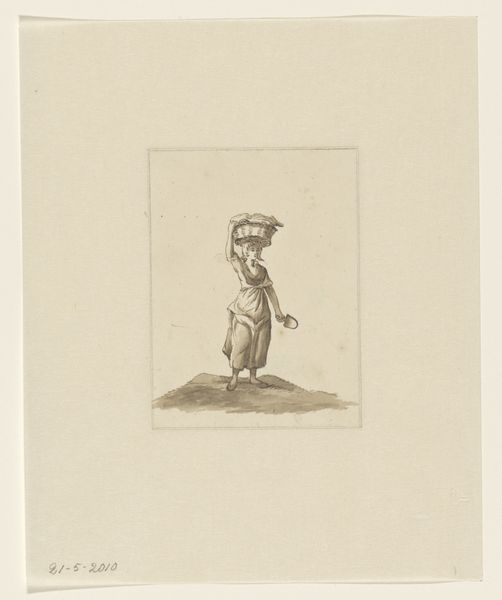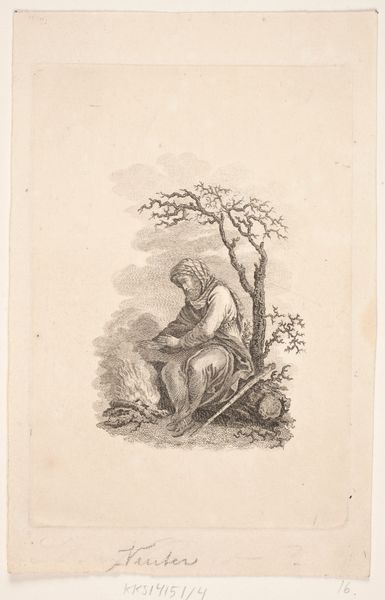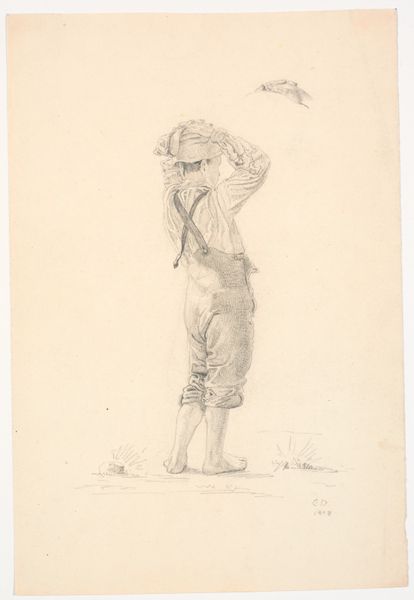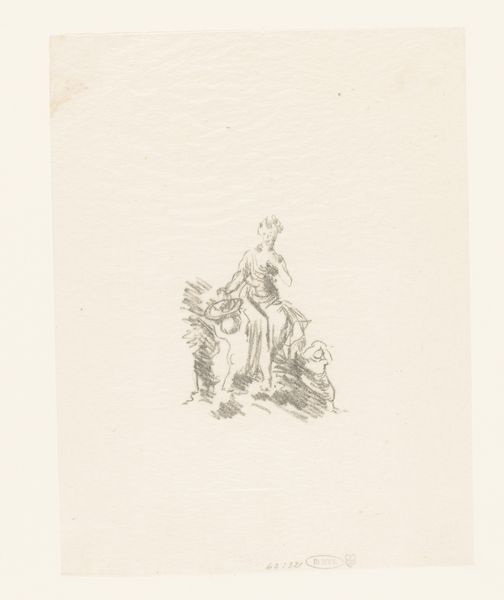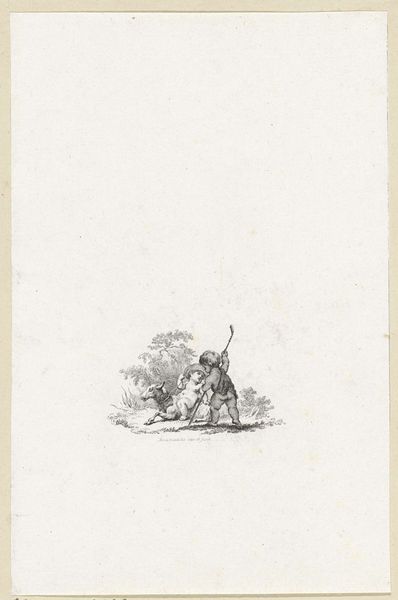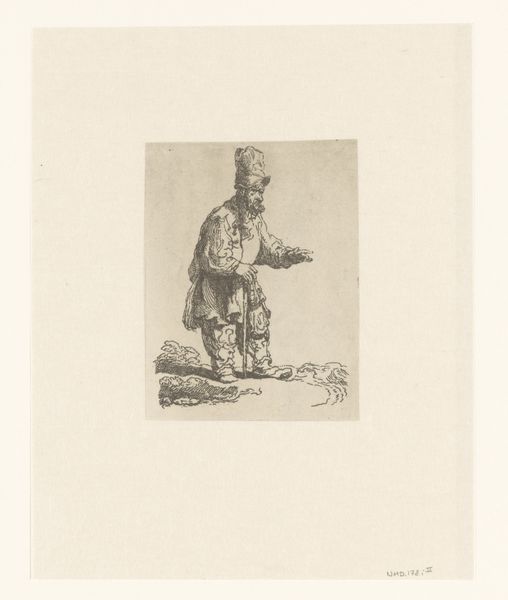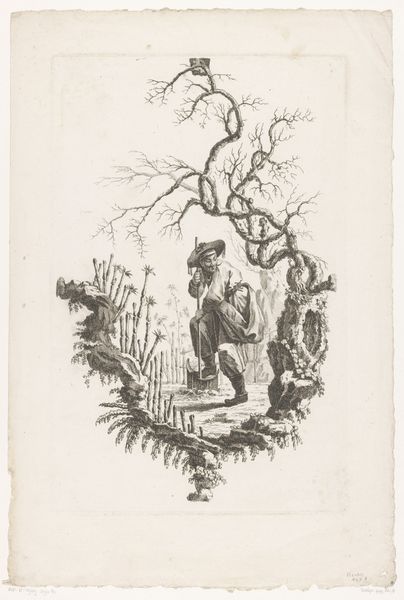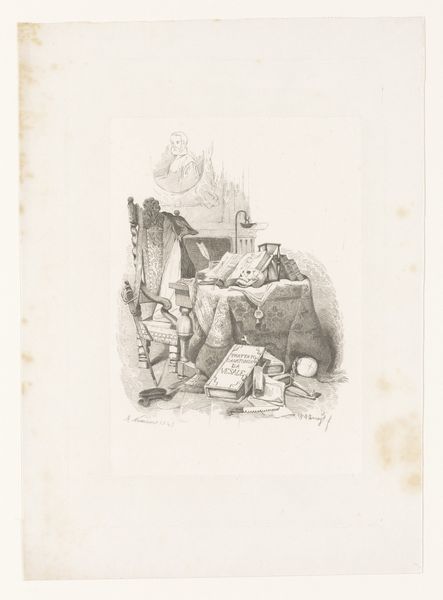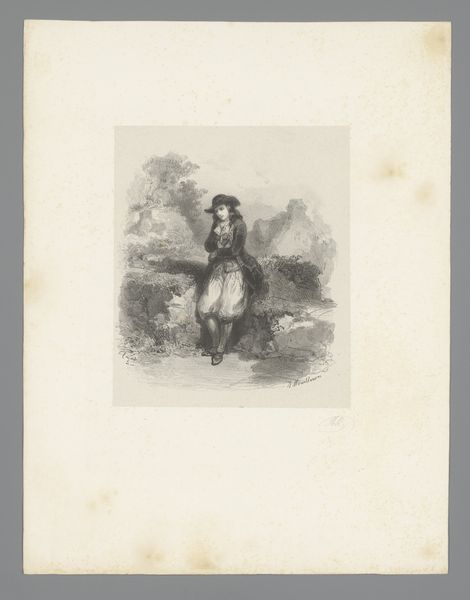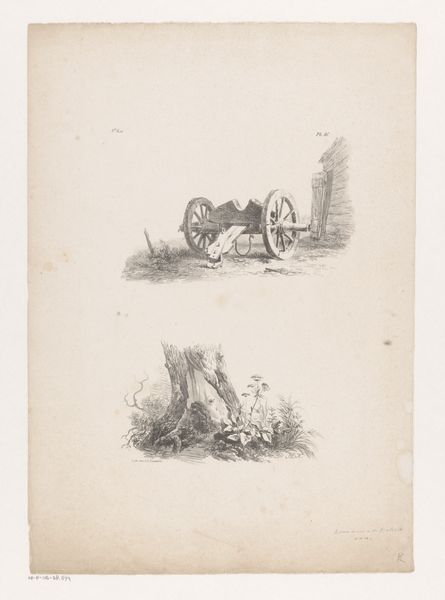
Man loopt door een bos, op de achtergrond enkele gebouwen waaronder een kerk 1836 - 1869
0:00
0:00
drawing, etching, ink
#
drawing
#
narrative-art
#
etching
#
pencil sketch
#
landscape
#
etching
#
figuration
#
ink
#
watercolour illustration
#
watercolor
#
realism
Dimensions: height 202 mm, width 139 mm
Copyright: Rijks Museum: Open Domain
Curator: This etching, attributed to Antonie Goyers, is titled "Man loopt door een bos, op de achtergrond enkele gebouwen waaronder een kerk," dating from approximately 1836 to 1869. Editor: It strikes me as somewhat melancholy, almost dreamlike, with that lone figure seeming to hurry away from the looming architecture in the distance. There's a roughness to the lines that suggests immediacy, yet the subdued tones give it an antique feeling. Curator: Indeed. That antique feeling connects to a wider shift in the period. Consider the rise of urbanization and industrialization during the mid-19th century, which saw a growing nostalgia for rural life. A figure escaping the city could symbolize anxieties regarding this rapid social change. Editor: It's fascinating to consider what sort of paper and inks Goyers would have been using at the time. There's an economy to the strokes suggesting efficiency. What would an analysis of its creation reveal about his practice and workshop? Was this piece intended as a preparatory sketch? Curator: Good questions. It could very well be. The artist is depicting a rather solitary scene. His posture looks hurried, almost furtive, carrying a staff, maybe indicating vulnerability, maybe defense. It invites narratives, but I am intrigued about what the artist tries to tell through this landscape as an allegory. Editor: Given the date, the etcher almost certainly had apprentices. To what extent might the artist's own labor have been obscured by his workshop? How are we valuing artistic labour, what we decide to value? Curator: I appreciate the focus on labor and class, but from a representational perspective, it begs us to ask what pressures informed the character's flight. Perhaps Goyers experienced pressure to move away from the tradition and to join an art academy and this is reflected in the subject he portrays? Editor: A compelling reading. Reflecting on this piece, the importance of understanding art not as isolated masterpieces but rather as artifacts born from a specific convergence of tools, material conditions, and societal factors, truly resonates with me. Curator: Yes, seeing Goyers’s etching is not only as a testament of a rapidly changing era but also invites us to reflect on the individuals affected by them.
Comments
No comments
Be the first to comment and join the conversation on the ultimate creative platform.
